- Home
- Encyclopedia
- Cheyenne, Magic City of The Plains
Cheyenne, Magic City of the Plains
Union Pacific locomotives still rumble through Cheyenne, as they first did 150 years ago. But after the railroad arrived in November 1867, skeptics questioned whether the town would last, as so many other end-of-tracks communities had died once the graders and tracklayers moved on.
Gen. Grenville Dodge had established the first Union Pacific Railroad townsite in the area at Crow Creek on July 4 of that year. Three married couples and three men arrived on July 9. First referred to as Crow Creek Crossing, the name of Iron City was reportedly considered for the place, which the railroad had already publicized as “one of the most important cities to be built between Omaha and California.”
Dodge and some of his friends are said to have renamed it Cheyenne for the Great Plains Indian tribe. The townsite, in what was still Dakota Territory then, was four miles square. By July 22, an office had opened to sell lots. On July 25, 1867, the first frame house was erected at the corner of Ferguson and Sixteenth streets. Construction of Fort D.A. Russell, a military post to protect the railroad, began a couple of weeks later.
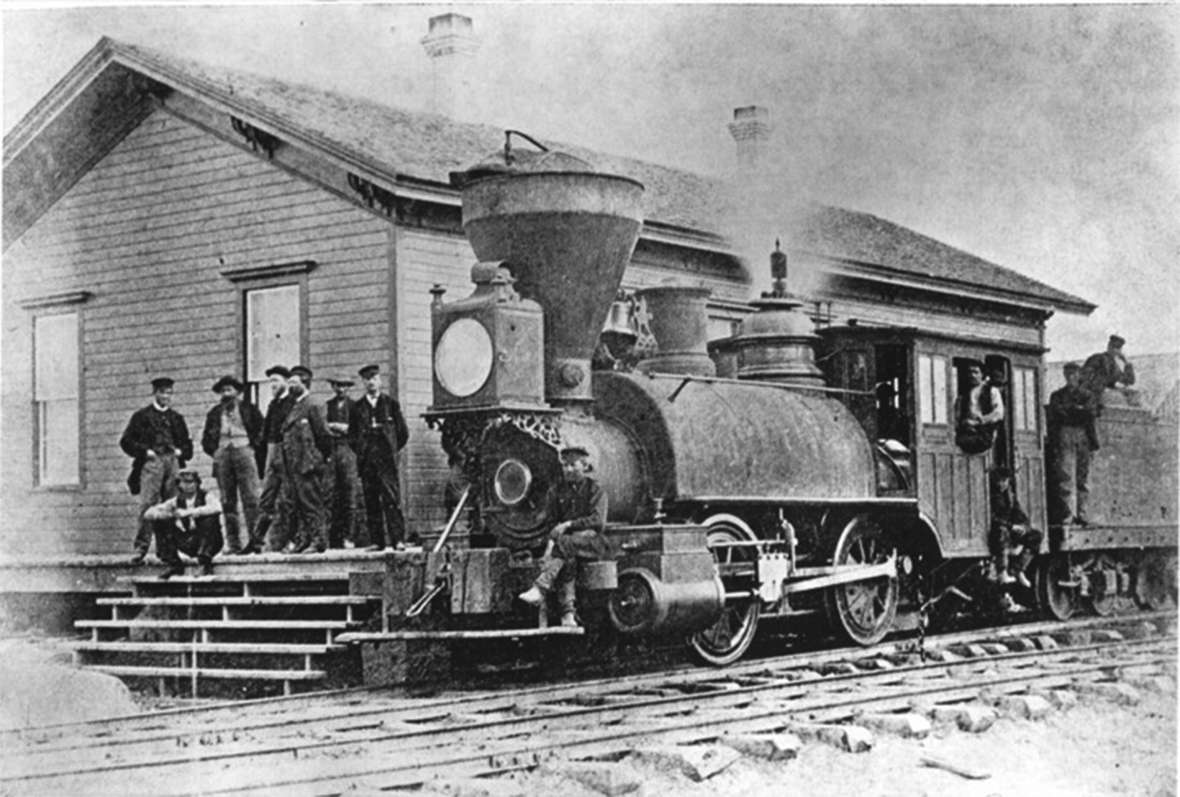
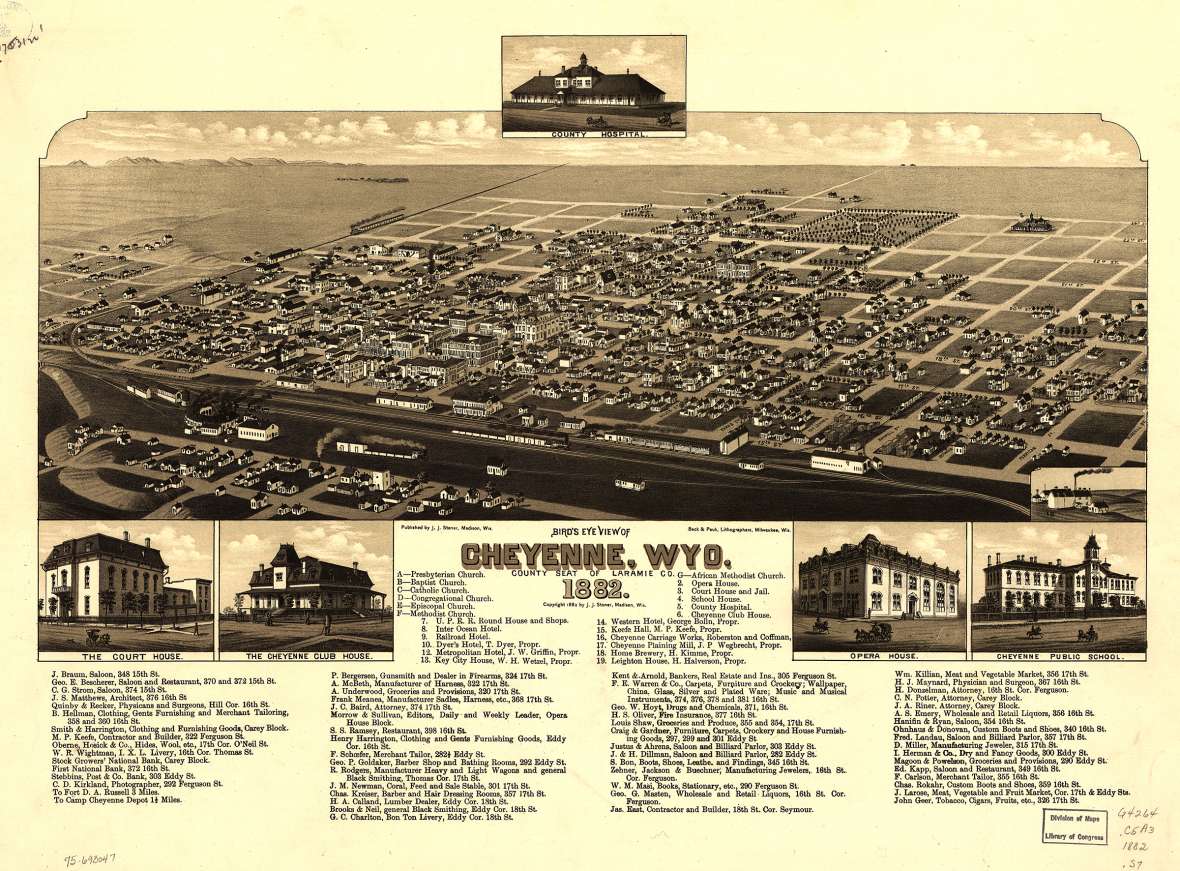
Early days
The life of this place was tied to the railroad. The first tracks reached Cheyenne on Nov. 13, 1867. A combination of construction challenges and the shrewd efforts of enterprising businessmen helped the town endure and grow.
Wyoming historian T.A. Larson noted that Cheyenne spent six months as an end-of -tracks town, “a much longer period than was allowed to any other Wyoming town.” Cheyenne merchants, he explained, supplied goods to railroad camps on Sherman Hill and also to Colorado towns as the Kansas Pacific Railroad built toward Denver. Larson also credited Fort Russell as being “a stabilizing force in the Cheyenne economy.”
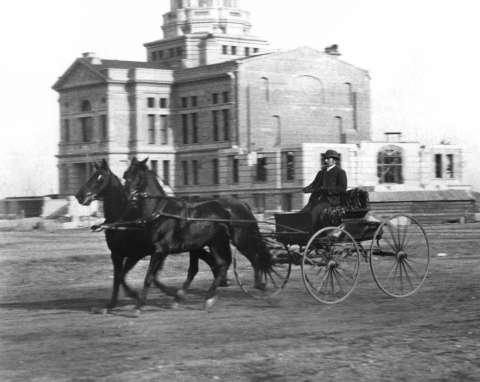
Growing rapidly, Cheyenne soon gained another name, “The Magic City of the Plains.” The Cheyenne Leader reported 200 businesses in town by November 1867. By July 1868, just a year after the first settlers arrived, the paper noted a population of “not less than 5,000."
Luke Murrin defeated attorney W.W. Corlett to win election as the town’s first mayor on Jan. 23, 1868. Early day revenues accumulated in city coffers from business licenses and fines. When Dakota Territorial District Judge Ara Bartlett ruled in March 1868 that only businesses named in the charter were required to pay license fees, city finances suffered. Eventually, a bond issue and even the sale of desks and tables owned by the city would become necessary.
Larson explains town citizens endured “disorderly behavior,” such as shootings, thefts and stabbings. Entertainment included dance halls and saloons. One barkeeper, James McDaniels, was known as the “Barnum of the West,” according to Larson, who stated McDaniels’ flamboyant attractions included a free museum, live theater and a zoo stocked with “porcupines, parrots, monkeys, apes, snakes and bears.”
Methodist, Episcopal, and Roman Catholics established congregations in Cheyenne; however, Larson noted, “Church folk were not legion in Cheyenne’s end-of-track days.”
In May 1869, Wyoming Territorial Governor John Campbell named Cheyenne the temporary capital, and the territorial lawmakers soon approved. Still, during the 1871 and 1873 legislative sessions, other towns, including Laramie and Evanston, were considered as possible capital cities. The cornerstone for the Wyoming Capitol in Cheyenne was laid May 18, 1887; the building was completed in the spring of 1890, with additional wings constructed in 1915.
The Durbin Brothers brought sheep to the area in 1870. In July 1870, Hiram “Hi” Kelly shipped the first cattle out of Wyoming, loading stock on railroad cars at the Cheyenne depot. Francis E. Warren, who would became the state’s first governor and one of its first two U.S. senators, was prominent in the livestock business as well.
Years later, Warren reportedly recalled the “rough and tumble” atmosphere of early Cheyenne, noting "Every man slept with from one to a half-dozen revolvers under his pillow, for depradations [sic] of every character could be expected at any hour, day or night." Another early stock raiser, Alexander Swan, is credited with bringing the first Hereford cattle into Laramie County in 1880.
The Cheyenne Club—patronized primarily by owners of the territory’s huge ranches—was established in 1880, but falling beef prices followed by the harsh winter of 1886-1887, brought a bust to the cattle business. Interest in the elegant clubhouse and its bar, billiard and reading rooms diminished.
The first Cheyenne Frontier Days occurred in the fall of 1897. Warren Richardson, the event’s first chairman, credited the idea, which he said was “born on the train” between Cheyenne and Greeley, Colo., to Col. E.A. Slack, editor of the Cheyenne Daily Sun Leader.
Slack envisioned a western show to rival Greeley’s Potato Day celebration. The first Frontier Day featured “cow punchers,” cow-pony and wild-horse races, bucking horses, stagecoaches and Indians as well as other events. Purses for the races ranged from $25 to $75. The newspaper reported that thousands came on the railroad to attend the festivities.
Fort D.A. Russell retained its military significance. Troops trained there for service in the Spanish American War and for World War I. In 1929, the fort was renamed in honor of Frances E. Warren.
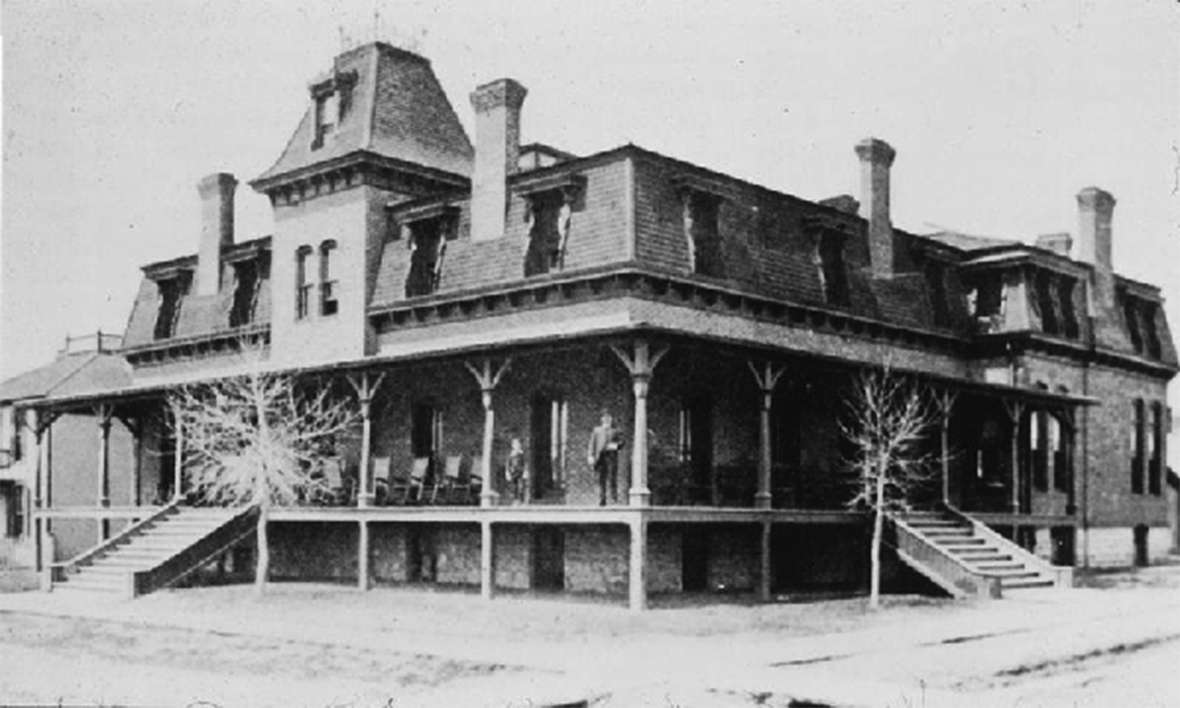
Aviation and defense
Transportation remained important to the city, with airplanes added to railroad tracks as technology advanced.
In the 1930s, Cheyenne became a major stopover for transcontinental aviation. Historian Rick Ewig notes that by 1935, United Airlines had scheduled a dozen arrivals and departures daily. In 1942, when flying was restricted on the West Coast because of World War II, United relocated its pilot training school to Cheyenne.
At the same time, the company opened a factory that modified military bombers, installing new guns and instruments on B-17s and B-24s. Workers modified more than 5,000 aircraft. Half of the 1,600 employees were women.
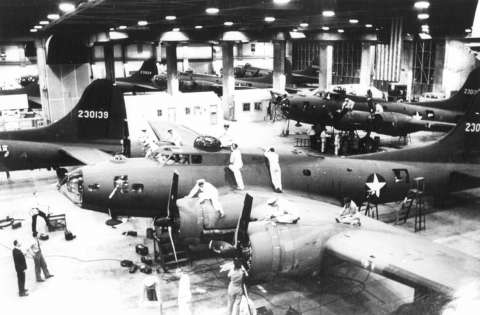
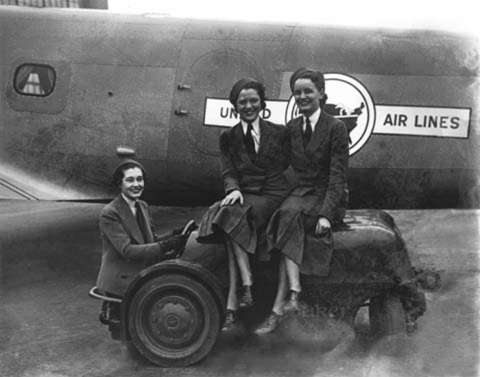
Ewig estimated that the aviation payroll in Cheyenne, which also included the Civil Aeronautics Authority, Inland Air Lines and Plains Airways, totaled in the millions of dollars per year. As aircraft became more modernized, for example with the use of pressurized cabins, the airlines moved their hubs to Denver. However, United created a stewardess school in Cheyenne in 1947, where more than 6,000 women eventually trained. In 1961, the school was moved to Chicago.
Also during World War II, Frontier Refining built a special fuel refinery in Cheyenne for aviation fuel, which was critical for aircraft of the era, and continued its operations after the war ended.
In 1947, Fort Warren became a U.S. Air Force Base—now the oldest continually active base in that military branch of service. The base has no airfields, however. In the late 1950s it was chosen as headquarters for the Atlas ICBM missiles under the leadership of the Strategic Air Command. According to Ewig, by the summer of 1963, 200 missiles were located in silos within 100 miles of the base in Wyoming, Colorado and Nebraska.
In 1966, Mayor Herbert Kingham appointed James Byrd as the first black chief of police in Cheyenne, and Byrd became the first black police chief in the state. He served for 16 years under several different mayoral administrations before he retired.
In 1977, F.E. Warren Air Force Base, one of the largest missile-command bases in the nation, was designated a National Historic Landmark. Ewig called the economic impact of the base and its early day Fort Russell predecessor “incalculable.”
He reported that U.S. Air Force officials estimated the annual economic contribution of the facility in 1982 as more than $156 million, which included military and civilian salaries for personnel who comprised about 13 percent of Laramie County’s workforce.
Current trends
Cheyenne citizens elected their first woman mayor, University of Wyoming alumna Marian Orr, in 2017. She used social media extensively during her campaign. She plans to increase the number of police officers, which had previously decreased, and wants to eliminate blight in the city.
Population for the Magic City, according to U.S. Census Bureau estimates, was 64,019 on July 1, 2016.
State figures show that Cheyenne’s prosperity continues to be dominated by government, as it has been since the city was first established as the territorial capital in 1869.
According to the Wyoming Division of Economic Analysis, government jobs were the largest sector of the economy in 2000. There were 15,709 of them, or 29.4 percent of total employment. In the next two largest sectors, by comparison, service jobs totaled 12,370 and retail jobs totaled 9,822.
But the government jobs paid much better, on average, than jobs in the next two largest sectors. Total earnings that year were $868.1 million for government, $449.2 million for services. That averages out to slightly more than $55,000 per job in government, compared to $36,000 per service job.
By 2015, according to state figures, the number of government jobs had risen to 17,503, but because employment was growing faster in other sectors, government jobs represented only 26.2 percent of total employment. Government earnings in 2015 in Laramie County were slightly more than $1.4 billion, which comes to an average of nearly $81,000 per job in pay and benefits.
In 2016, Cheyenne Frontier Days total attendance was tallied at 259,193. The Professional Rodeo Cowboys Association rodeo, considered to be the world’s largest outdoor rodeo, drew nearly 1,500 contestants competing for a total purse of more than $1 million. Other events included nightly concerts by well-known entertainers, free pancake breakfasts, parades, Indian village and art show and air shows by the U.S. Air Force’s Thunderbirds.
The Wyoming Capitol, arguably the most important historic building in the state and a dominant structure of Cheyenne’s skyline, is currently being restored. The remodel of the three-and-one-half story structure, 300 feet long by 83 to 112 feet wide, is expected to be finished in 2018. The height of the center and wings is about 60 feet; the distance from the grade of the building to the top of the spire on the dome is 146 feet. All offices in the Capitol have been moved to temporary locations for the duration of the project.
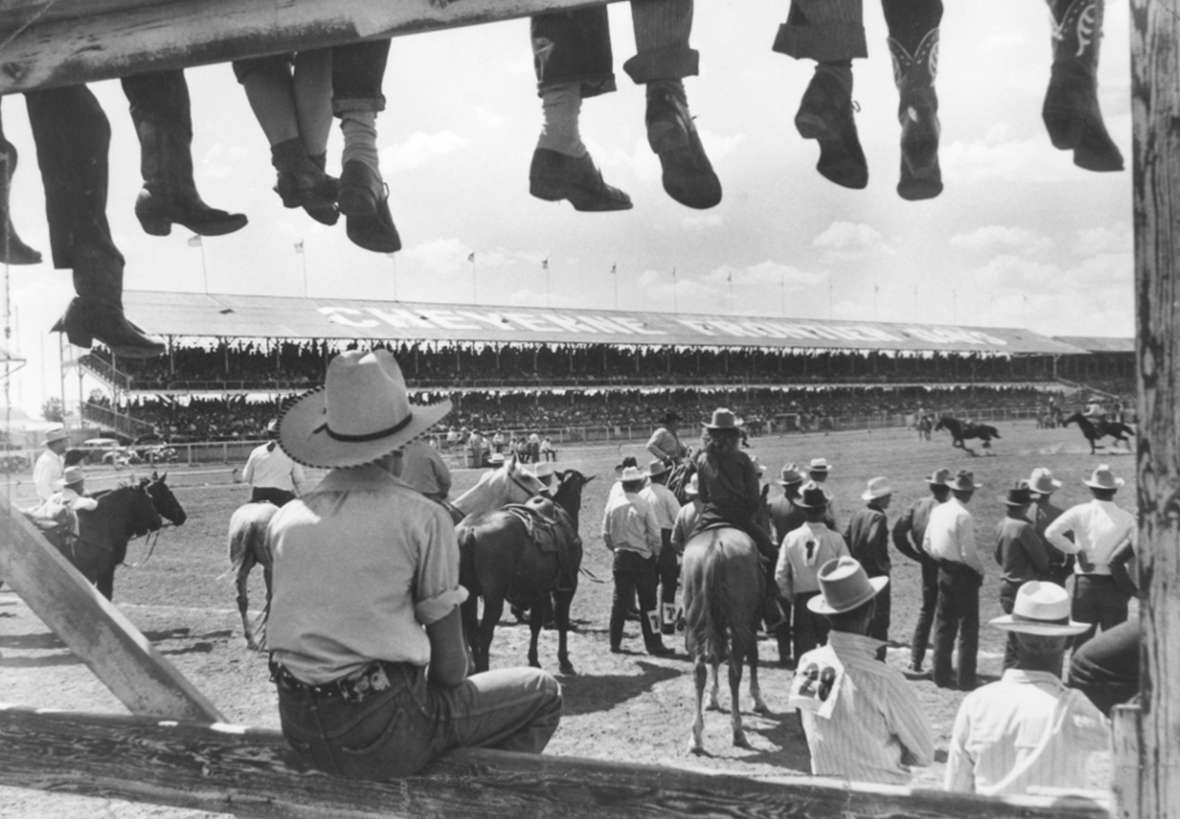
Resources
- “The First Frontier Days,” Cheyenne Sun Leader, Sept. 23, 1897. Accessed Oct. 13, 2017, at http://newspapers.wyo.gov.
- “The Pioneers, First Anniversary of the First Actual Settlers in Cheyenne,” Cheyenne Leader, July 9, 1868, 1. Accessed Oct. 13, 2017, at http://newspapers.wyo.gov.
- “Cheyenne Economic Indicators.” Wyoming Economic Analysis Division. Accessed Oct. 23, 2017, at http://eadiv.state.wy.us/creg/Cheyenne_Economic_Indicators.pdf, 1.
- “Cheyenne’s First Female Mayor,” UWYO Magazine. April 14, 2017. Accessed Oct. 16, 2017, at http://www.uwyo.edu/uwyo/2017/18-3/alumnews/cheyennes-first-female-mayor.html.
- Cheyenne Frontier Days™ Fact Sheet 2017. Jan. 1, 2017. Accessed Oct. 9, 2017, at http://www.cfdrodeo.com/wordpress/wp-content/uploads/2014/03/2017-Fact-Sheet.pdf.
- “Cheyenne, Wyoming.” Wikipedia. Accessed Oct. 13, 2017, at https://en.wikipedia.org/wiki/Cheyenne,_Wyoming#cite_note-city-10.
- Drake, Kerry. “Francis E. Warren: A Massachusetts Farm Boy Who Changed Wyoming,” WyoHistory.org. Accessed Oct. 13, 2017, at /encyclopedia/francis-e-warren-massachusetts-farm-boy-who-changed-wyoming.
- Ewig, Rick. Cheyenne: A Sesquicentennial History. HPN Books: San Antonio, Tex., 2017, 41-42, 53, 73, 60-61.
- Hanesworth, Robert D. “Early History of Cheyenne ‘Frontier Days’ Show.” Annals of Wyoming, 12 (1940): 199-211. Accessed Oct. 13, 2017, at https://archive.org/details/annalsofwyom12141940wyom.
- Herman, Marguerite. “Laramie County, Wyoming.” WyoHistory.org. Accessed Oct. 3, 2017, at /encyclopedia/laramie-county-wyoming.
- Hillinger, Charles. “Only Black Cop a Popular One, Too.” Google News. The Tuscaloosa News, April 12, 1973. Accessed Oct. 16, 2017, at https://news.google.com/newspapers?nid=1817&dat=19730412&id=DgEdAAAAIBAJ&sjid=OJwEAAAAIBAJ&pg=5852,2183605&hl=en.
- Laramie County Earnings by Industry and Industry Sectors,” Wyoming Economic Analysis Division. Accessed Oct. 23, 2017, at http://eadiv.state.wy.us/wef/P_Laramie_WY.pdf 8,9.
- “Laramie County Employment by Industry” and “”Industry Sectors.” Wyoming Economic Analysis Division. Accessed Oct. 23, 2017, at http://eadiv.state.wy.us/wef/P_Laramie_WY.pdf, 6, 7.
- Larson, T.A. History of Wyoming, 2d ed., rev. Lincoln: University of Nebraska Press, 1978, 28, 41-42, 50, 52, 56-57.
- Mackey, Mike. “Cheyenne’s 100-Octane Aviation Fuel Plant.” WyoHistory.org. Accessed Oct. 16, 2017, at /encyclopedia/cheyennes-100-octane-aviation-fuel-plant.
- “Marian Orr Elected as Mayor of Cheyenne.” KGWN.tv., Nov. 9, 2016. Accessed Oct. 16, 2017, at http://www.kgwn.tv/content/news/Marian-Orr-elected-as-Mayor-of-Cheyenne-400506411.html.
- U.S. Census Bureau. “QuickFacts selected: Wyoming.” Accessed Oct. 24, 2017 at https://www.census.gov/quickfacts/WY.
- Van Pelt, Lori. Capital Characters of Old Cheyenne. Glendo, Wyo.: High Plains Press, 2005. 15,18, 31-33, 214-215.
- ___________. “Liz Byrd, First Black Woman in Wyoming’s Legislature.” WyoHistory.org. Accessed Oct. 16, 2017, at /encyclopedia/liz-byrd-first-black-woman-wyoming-legislature.
- Whipple, Dan. “Wyoming’s Nuclear Might: Warren AFB in the Cold War.” WyoHistory.org. Accessed Oct. 13, 2017, at /encyclopedia/wyomings-nuclear-might-warren-afb-cold-war.
Illustrations
- The bird’s eye view of Cheyenne, 1882, is from the Library of Congress. Used with thanks.
- The photo of the Cheyenne Club is from Wyoming Tales and Trails. Used with thanks.
- The rest of the photos are from the Wyoming State Archives. Used with permission and thanks.
